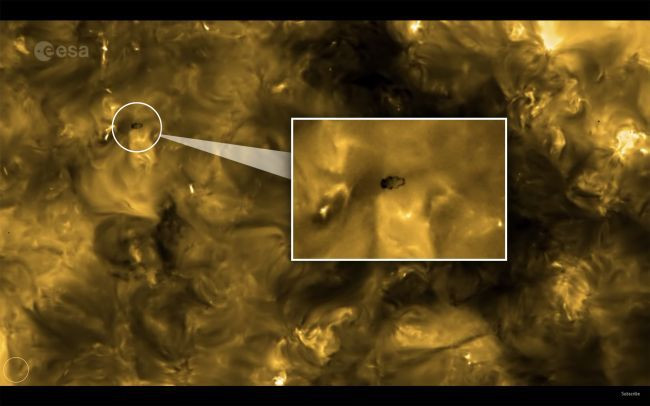Tardigrade-Shaped Blob Appears On Sun’s Surface In Latest Solar Orbiter Photos
KEY POINTS
- NASA and the ESA released new photos of the Sun captured by the Solar Orbiter
- A tardigrade-like object appeared in the photos taken by the Solar Orbiter
- The mission's principal investigator clarified the nature of the object, saying it was caused by a technical issue in the sensor of the Solar Orbiter’s imaging systems
The latest photos captured by NASA and the European Space Agency’s (ESA) Solar Orbiter feature an object that looks like a tardigrade on the surface of the Sun. After viewing the image, the principal investigator of the mission clarified the nature of the strange object in the image.
NASA and the ESA recently announced that they had released the latest images of the Sun taken by the Solar Orbiter, a robotic satellite launched by the agencies in February to study the massive star. Some of the images include the closest ever taken of the Sun.
As members of the public viewed the images, some of them noticed a strange-looking object on the surface of the Sun. Based on the image, the object looks like a tardigrade, which is an eight-legged segmented micro-animal that’s known to survive in harsh conditions.
Some of the people who saw the tardigrade-like object joked that the organism, which has been to outer space, might have hitched a ride on the Solar Orbiter to reach the Sun.
After viewing the images of the alleged tardigrade, David Berghmans, the principal investigator for the Solar Orbiter mission, clarified that the object is not a living organism. Instead, its appearance was caused by a technical issue in the sensor of the Solar Orbiter’s imaging systems.
“It's a sensor defect,” Berghmans said during a recent conference, according to Live Science. “In future processing when we further optimize this, this will be cleaned up and interpolated from nearby pixels. But for the moment, it's still clearly visible.”
Although the object in the photo isn’t really a tardigrade, there are still other interesting images in the data collected by the Solar Orbiter. These include the campfires, which appear as bright spots on the Sun’s surface.
According to Berghman, these campfires are like smaller and weaker versions of solar flares. They were most likely caused by minor explosions on the Sun.
“The campfires we are talking about here are the little nephews of solar flares, at least a million, perhaps a billion times smaller,” he explained in a statement. “When looking at the new high-resolution EUI images, they are literally everywhere we look.”

© Copyright IBTimes 2024. All rights reserved.





















